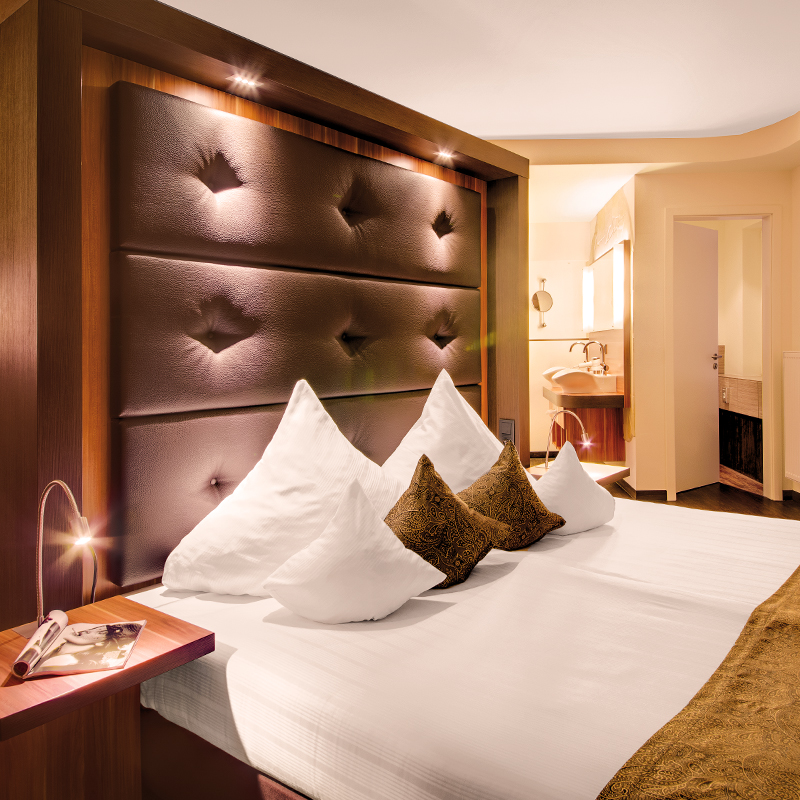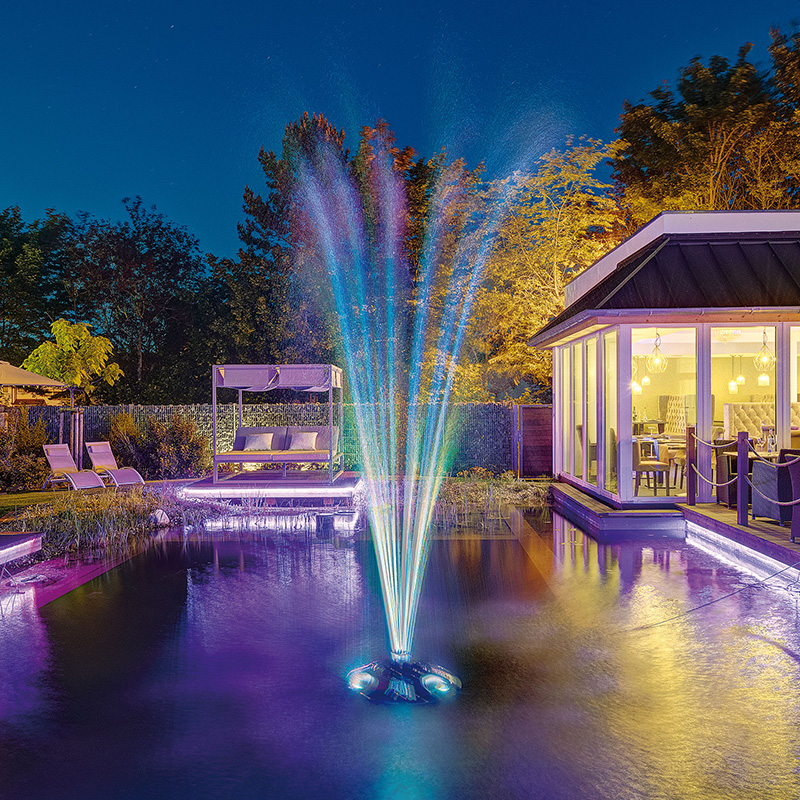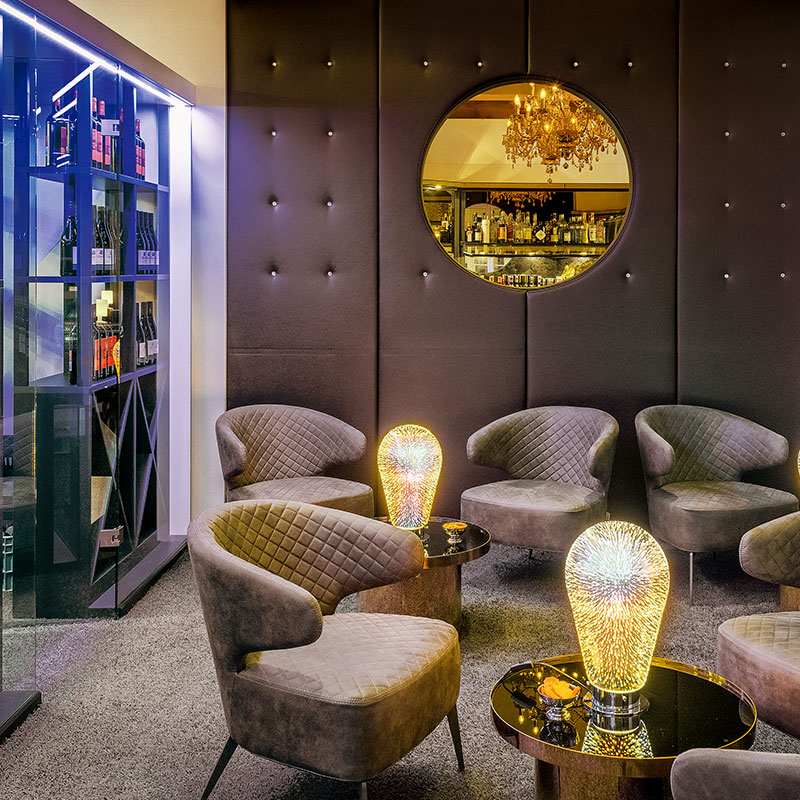Bernkastel-Kues
This is how you like Bernkastel-Kues best
Bernkastel-Kues
The community Bernkastel-Kues is divided into four districts. Bernkastel, Andel, Wehlen and Kues. The districts of Bernkastel and Andel are on the right, and the districts of Wehlen and Kues are both on the left bank of the Moselle, and on this side is the Lifestyle Resort Zum Kurfürsten, which is located on the Kueser plateau. A total of around 7800 people live in all four parts of the city. Bernkastel and Kues are separated by the Moselle. The town of Bernkastel-Kues, in its present form, was not established until April 1, 1905. At that time, the town of Bernkastel was merged with the wine-growing village of Kues opposite. We definitely recommend a visit to the old town of Bernkastel to do the historical market plates and the many lovingly restored half-timbered houses. Explore small alleys and plaques with tips for drinking and anecdotes.
Incidentally, the honorary mayor of the city is Wolfgang Port (CDU). He was re-elected for the first time in 2000 and lastly in 2014 with no opposing candidates.
The sights of Bernkastel-Kues at a glance
Spitz cottage at the historic market square. At first glance, it is a bit skewed, which is confirmed at second glance.
The overhanging half-timbering of the Spitzhäuschen was uncovered in 1914. This was previously plastered over, as was the case with numerous half-timbered houses.
The eye-catching bay window and the half-timbered facades bear witness to the traditional architecture of the famous Moselle cities.
At the Spitzhäusen you can see the transition from the Renaissance to the Baroque style of construction.
At the same time, the Spitzhäuschen is a typical example of traditional Moselle winegrowers' houses with slate stone walls and the accompanying expanded wine cellar with oak beams.
Today, the Schmitz-Herges family winery is located on the ground floor.
Graacher Gate in Bernkastel-Kues was built around 1300 as a passage through the city fortifications in the north of Bernkastel. The name Graacher-Tor comes from the neighboring town, in the direction of which the gate leads to the eponymous city. Originally the gate was a tall gate tower. After its destruction during the war, a two-storey building with a vaulted passage was built in the 18th century, the gate that has been preserved to this day. A prison was built on the Graacher Tor in 1734. Apartments and a shelter for the homeless were built here later.
In 1985 it was decided to set up a local museum with cultural and historical exhibits in Graacher Tor. The building was modified for the last time in 2002. Here the gate received replicas of the wooden gates that were used.
Kalrsbader Platz. The second most important square in the old town of Bernkastel-Kues, directly behind the tourist information building, is called “Karlsbader Platz. It comes from the Czech twin town Bernkastel-Kues, namely Karlsbad.
This partnership with the famous spa town has existed for over 10 years now.
Karlsbader Platz is an attractive destination that offers a view of the Moselle from the square. Much of the annual Christmas Mart takes place here. Thanks to its central location, other events and concerts can also be found here.
This is how the new one became, for example Moselsteig officially opened here. As part of the Bernkastel-Kues summer stage Live concerts and other performances are offered. Together with the historic market square, Karlsbader Platz is one of 2 places in Bernkastel-Kues where numerous music groups during the great "Wine festival of the Middle Moselle“Place their appearances.
The fountain on Karlsbader Platz is a gift from the Czech twin town, its counterpart is on the plague column in Karlsbad. The sculpture symbolizes eternal life, day and night. The girl's face is reminiscent of the day, the boy's face with closed eyes of the night. The two snakes embody eternal power, grapes can be seen on the bodies. The cascading waterfall - over three levels - is reminiscent of the eternal cycle: water is a symbol of health, cleanliness and strength.
Landshut castle ruins
Churches in Bernkastel-Kues There are 4 churches in Bernkastel and Kues. More information about these Churches in Bernkastel-Kues you will find here.
Bernkastel Doctor
History of the most important vineyards in Bernkastel-Kues
The well-known story of the "Bernkasteler Doctor" location, about which the following is told: Archbishop Boemund 11th of Trier was lying in his mountain castle above Bernkastel and was terminally ill. Many doctors tried to cure the old man, but none could bring him salvation. Boemund had already consumed vast quantities of tea and herbal beverages as well as bitter medicine; it was in vain.
Then he let it be known that whoever was able to banish his tiresome fever should come to help him. He would be sure of a high reward.
At the same time, Gerhard Vogt von Hunolstein (1359-1372), a very old knight, lived at his castle in the Hunsrück. It was said that he was a brave man brimming with health. Despite his advanced age, he was strong. His limbs were limb too, and a dawn on his face testified to his extremely good health. As soon as this knight, with his old bones, felt weak or when an illness was approaching him, a special drink always helped him, namely the Bernkasteler wine, which he had drawn himself. He then took a big swig of it because that was important.
When the knight heard of Boemund's illness, he reflected and thought of his always tried and tested aid. He went straight to the sick man and took a barrel of the best old wine with him. Boemund was startled when it saw the barrel, because he thought it was another bitter medicine. The knight, however, laughed, lifted the round vessel from his shoulder, and poured this wonderful medicine into Boemund's cup. As he poured the wine, it gave off a spicy scent that filled the whole room. Boermund then gladly took the cup and emptied it to the floor without arguing. The miraculous healing cure took effect immediately and he was above all grateful to the knight.
His words about recovery were as follows: “My dear Herr von Hunolstein, your health-giving grape blood is the best doctor; therefore wine and mountain should bear the name "Doctor" for all time ".
This is how the name of this location came about
Further details about the Doctorberg can be found here: Doctor Berg info




